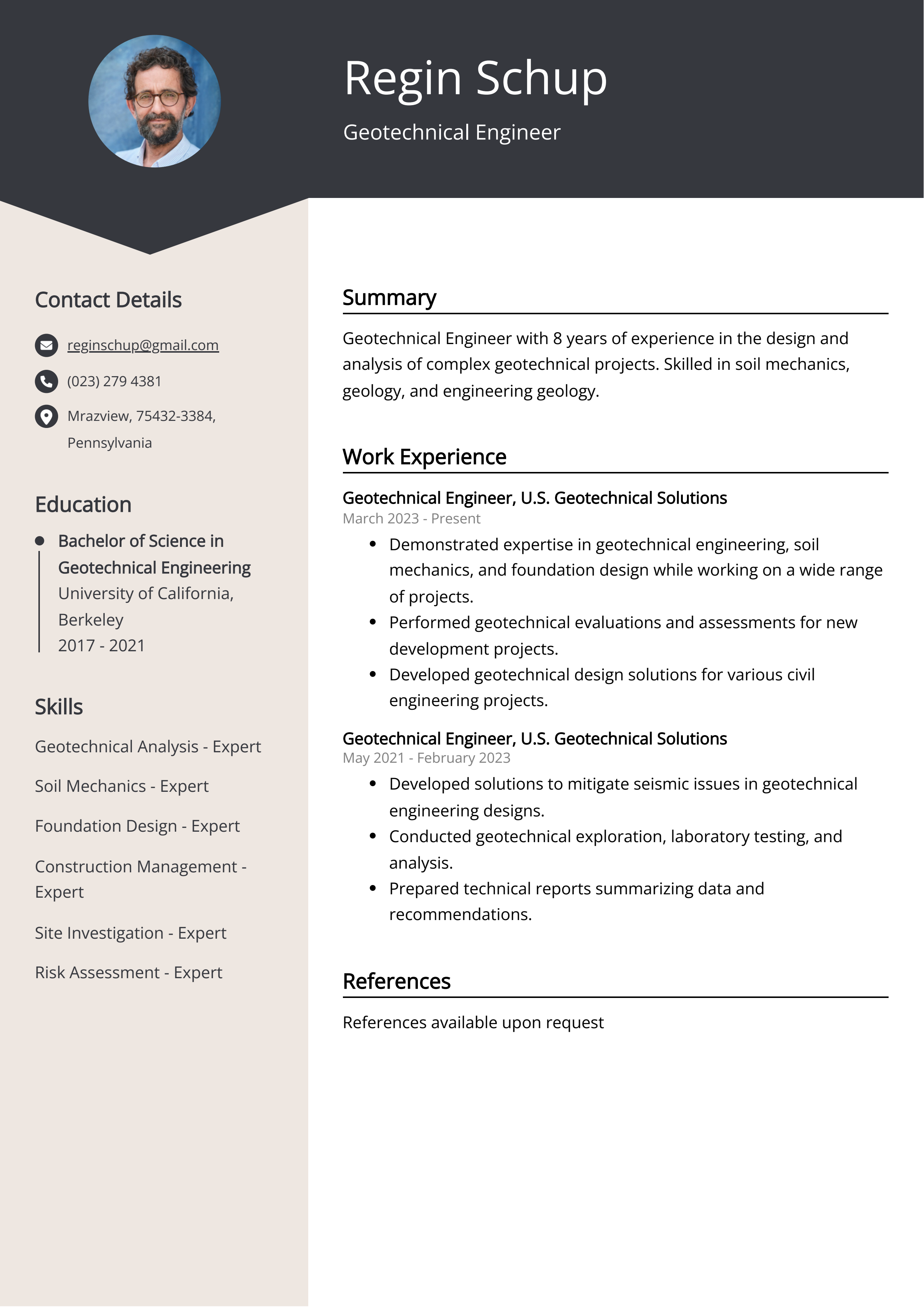How Geotheta can Save You Time, Stress, and Money.
Some Known Questions About Geotheta.
Table of ContentsGeotheta for DummiesGeotheta Can Be Fun For EveryoneThe smart Trick of Geotheta That Nobody is Talking AboutFacts About Geotheta UncoveredThe Basic Principles Of Geotheta

They perform site investigations, collect samples, do laboratory tests, and assess information to evaluate the viability of the ground for construction projects - Consulting Engineer. Based upon their searchings for, geotechnical designers provide referrals for structure design, incline security, maintaining structures, and reduction of geotechnical threats. They collaborate with various other specialists, such as engineers, architectural engineers, and building groups, to make certain that geotechnical factors to consider are incorporated right into the general job style and execution
By analyzing the actions and residential properties of soil and rock, they can determine potential geotechnical threats such as landslides, dirt negotiation, or slope instability. Their expertise aids stop failures or accidents that can jeopardize lives and home. Here are some detailed tasks and responsibilities of a geotechnical designer: Website Investigation: Geotechnical designers conduct website examinations to gather information on subsurface conditions.
They analyze the information to recognize the residential or commercial properties and behavior of the soil and rock, including their strength, leaks in the structure, compaction characteristics, and groundwater problems. Geotechnical Evaluation and Design: Geotechnical designers analyze the information gathered during website investigations to examine the stability and suitability of the website for building and construction jobs. They carry out geotechnical calculations and modeling to evaluate variables such as birthing capability, settlement, incline security, side earth pressures, and groundwater circulation.
The Of Geotheta
Foundation Layout: Geotechnical engineers play a vital duty in creating foundations that can safely sustain the desired structure. They evaluate the soil conditions and load needs to identify the ideal foundation kind, such as shallow structures (e.g., grounds), deep foundations (e.g (https://www.pubpub.org/user/ian-hammond)., heaps), or specialized strategies like soil renovation. They think about elements such as negotiation limitations, bearing ability, and soil-structure interaction to develop optimal structure styles
They review building and construction plans, display site tasks, and carry out field examinations to verify that the style recommendations are adhered to. If unanticipated geotechnical concerns emerge, they assess the circumstance and provide suggestions for remediation or modifications to the layout. Danger Analysis and Mitigation: Geotechnical designers assess geotechnical risks and threats connected with the job site, such as landslides, liquefaction, or soil erosion.

Partnership and Communication: Geotechnical designers work carefully with various other professionals entailed in a project, such as designers, architectural engineers, and building and construction teams. Reliable interaction and collaboration are necessary to integrate geotechnical considerations into the total task design and building and construction process. Geotechnical engineers give technical know-how, solution queries, and make sure that geotechnical requirements are satisfied.
Geotheta for Beginners
Here are some kinds of geotechnical designers: Structure Designer: Structure designers focus on creating and analyzing foundations for structures. They examine the dirt conditions, tons demands, and website qualities to identify the most proper structure kind and layout, such as shallow foundations, deep foundations, or specialized methods like heap structures.
They review the variables affecting incline stability, such as soil residential or commercial properties, groundwater problems, and incline geometry, and create methods to prevent incline failings and reduce dangers. Earthquake Engineer: Quake designers concentrate on assessing and making frameworks to endure seismic forces. They assess the seismic Tailings Engineer threat of a website, examine soil liquefaction capacity, and create seismic layout requirements to guarantee the safety and resilience of structures during earthquakes.
They execute area testing, gather samples, and evaluate the collected information to define the dirt residential or commercial properties, geologic developments, and groundwater problems at a site. Geotechnical Instrumentation Designer: Geotechnical instrumentation engineers focus on tracking and measuring the habits of dirt, rock, and structures. They mount and keep instrumentation systems that keep an eye on aspects such as dirt settlement, groundwater levels, incline motions, and architectural variations to analyze performance and provide very early cautions of possible concerns.
Geotheta Fundamentals Explained
They perform examinations such as triaxial examinations, consolidation tests, straight shear examinations, and leaks in the structure examinations to collect data for geotechnical analysis and style. Geosynthetics Designer: Geosynthetics designers focus on the style and application of geosynthetic materials, such as geotextiles, geogrids, and geomembranes. They utilize these materials to improve soil security, enhance slopes, offer drainage services, and control erosion.
They tend to be investigatory people, which indicates they're intellectual, reflective, and analytical. They are interested, methodical, rational, analytical, and rational. Some of them are also social, implying they're kind, charitable, cooperative, individual, caring, handy, understanding, sensible, and pleasant - Engineer of Record.
In the workplace setting, geotechnical engineers make use of specialized software tools to carry out estimations, produce designs, and assess data. They prepare reports, review task requirements, communicate with clients and team participants, and coordinate job activities. The workplace setup offers a helpful setting for research study, analysis, and cooperation with other experts associated with the job.
The Basic Principles Of Geotheta
They often check out job websites to perform site examinations, examine geotechnical conditions, and gather information for analysis. These visits include taking a trip to various locations, often in remote or tough terrains. Geotechnical engineers might carry out dirt sampling, conduct examinations, and monitor building and construction activities to make certain that the geotechnical elements of the task are being executed properly.
Geotechnical engineers also operate in specialized geotechnical labs. In these centers, they perform experiments, perform examinations on soil and rock examples, and examine the design residential or commercial properties of the materials. Geotechnical research laboratory designers work extensively in these environments, managing screening equipment, running tools, and tape-recording information. They collaborate with other laboratory personnel to make sure exact and trustworthy screening outcomes.